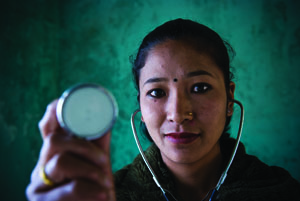 |
Which one preventive intervention leads to the largest average increase in life expectancy in a target population:
a) A regular exercise program
b) Quitting smoking
c) Mammogram (breast cancer prevention screening in women)
d) Pap smear (cervical cancer prevention screening in women)
e) Prostate gland cancer screening for men
The answer is b) quitting smoking. For a targeted population, more than all the other choices listed above, quitting smoking will add 3 to 5 years. A regular exercise program will add 1 to 2 years and the rest of the others will each add a couple of months. This question illustrates the importance of quitting smoking and exercising. Does this mean that c,d, and e options are not worth pursuing?
Predicted increases in life expectancy are average numbers that apply to populations and not individuals. For example, mammograms may increase life expectancy overall by only 2 to 3 months, but for the individual at risk of breast cancer (patients with a family history of breast cancer, smoking etc), the screening may add many years by detecting the disease earlier. This same pattern holds true for cervical cancer and prostate cancer in the question above.
Many of us do not know if we are at risk for common diseases because this may not be obvious, like a family history. So, in carrying out recommended screening tests like the ones in the question above, it is important to assume that we are average Joes (or average Ram Bahadurs and Sita Devis) who may be at risk.
In a country like Nepal where day to day existence is so difficult for so many people, it may be hard to understand the concept of "wellness" which the above medical question evokes. But this idea of wellness is in our interest because prevention is better than cure. And crucially, cure is more expensive. Hence not only quitting smoking and exercise, but tests like breast and cervical cancer screening may help a great deal in promoting wellness. Raising awareness about the importance of screening tests in the community is a very good public health practice.


